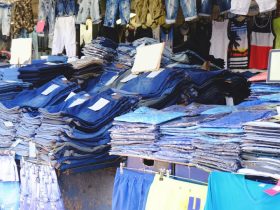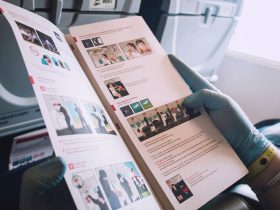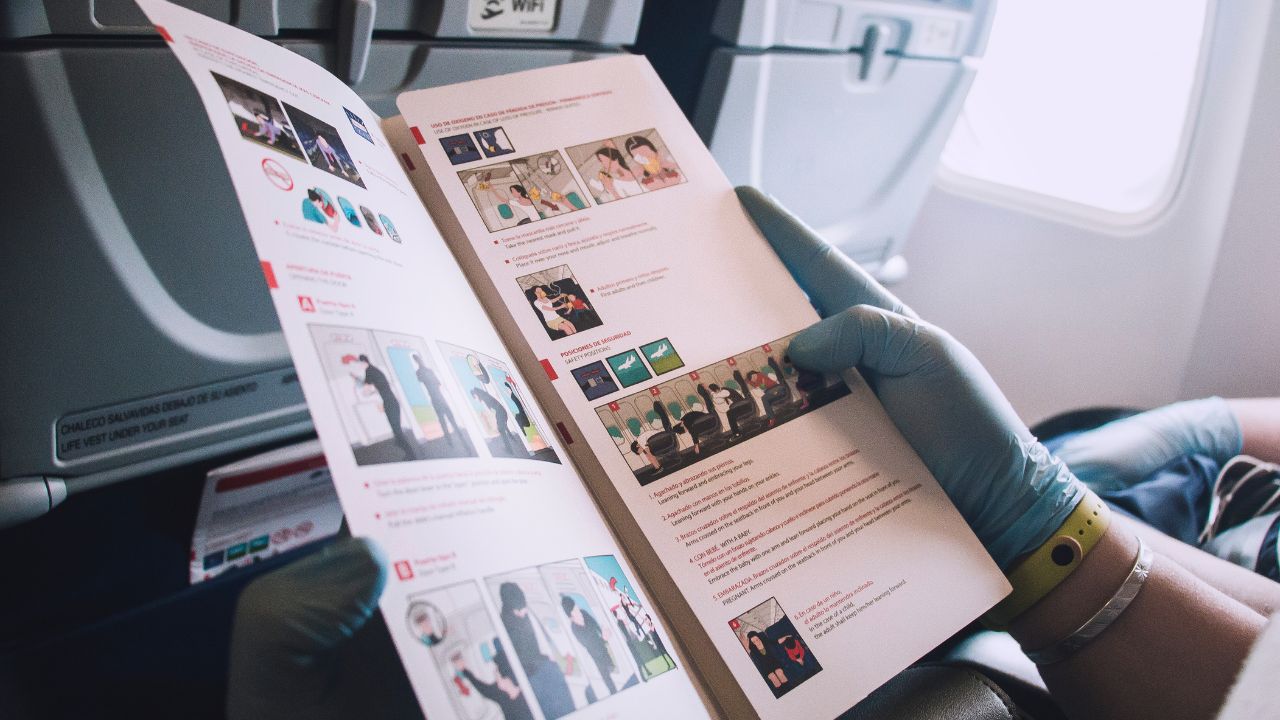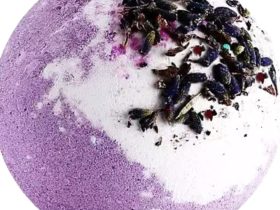No other medium offers you as much scope as an image brochure to put your company in the right light, to present your corporate philosophy and to explain the advantages of your products or services. You determine the scope, content and visual presentation yourself, taking into account important aspects such as external impact and target group appeal. Before you can create an image brochure, there are a number of questions you should clarify. It is best to record these in a concept. This way, all those involved in the creation of the brochure (including copywriters and graphic designers) will have the information they need.
Many companies offer their image publications for download on their website. This is certainly useful for the quick information needs of interested parties, but it is no substitute for an image brochure that can be touched – in the truest sense of the word. The printed version has clear advantages:
Haptics: With the booklet printing, the reader holds something in his hands, something to (touch), can turn real pages and feel the high-quality paper.
Value: Even if the basics for an online version have to be just as carefully researched and elaborately compiled, the digital version does not spark the same effect. The impression that someone has put a lot of effort into it is more likely to be created with printed copies. In fact, there are a few more work steps and a much higher financial investment than with online brochures. The result is a publication whose higher value can be felt.
Clarity: If you present your readers with a sophisticated e-book, you can of course offer the same convenience with your digital version. However, this is rather rare and also impractical at present, as not everyone has a reader. With conventional online publications, it is sometimes easy to jump from A to B, but it is not possible to stay at two points at the same time. With the printed image brochure, this is possible: hold your finger on it, leave the page open, insert a bookmark.
Readability: Printed letters are still more pleasant to read than those on a monitor. Time-consuming scrolling because the mobile screen is too small is also a thing of the past.
Desired quality: If you want to study an image brochure more closely, you may print it out yourself because of the two points mentioned above. And possibly on thin cheap paper with a non-existent colour intensity – the best layout cannot stand up to this. This is how pathetically your image brochure is then presented in this environment.
Longevity: A saved PDF will be forgotten, a printed copy will eventually end up in the wastepaper basket. The higher the quality of an image brochure, the longer it will be kept and thus remain visible.
The disadvantages of the printed image brochure are, as already mentioned, a higher processing and cost effort. However, if you use common formats, you can save a lot of money with a small print run to start with.
PRINTED AND DIGITAL
IS THE IDEAL CASE
Printed AND digital is the ideal case: the company presents itself with a high-quality printed brochure that is also available for download on the homepage. This way you also reach interested parties who have no direct contact with the company or access to the brochure display.
For which target group do you create the image brochure?
Addressing the target group is somewhat more difficult than with other corporate publications. If you usually try to narrow down the target group as much as possible, the target group for an image brochure is inevitably much broader. After all, it presents the company in all its facets from its best side – this does not only appeal to customers.
For example, you can create an image brochure for:
Existing customers
Prospective customers, potential new customers
Investors
Business partners
Employees
Applicants
(Local/regional) public
Press
If you don’t have the luxury of creating different image brochures for different target groups and situations, you have to get all the addressees under one hat. This is not easy, but it can be done.
ALL TARGET GROUPS
GET THEM ALL UNDER ONE ROOF
Start by determining whether all target groups need to be addressed equally. Then work with your staff to find out what the composition of each group is and what their needs are.
Let’s assume that the customers are on average over 60 years old, and that most of the interested parties are as well. Then you can accommodate them with a larger font and a quiet layout, for example.
Applicants, on the other hand, are interested in whether the company is an attractive employer. For them, you can let employees have their say in the brochure, commenting on the positive working atmosphere and the special benefits.
The needs of the press, on the other hand, are met with tangible, clearly structured information, the naming of a contact person and professional photo material, which can be requested if necessary.
What image are you striving for?
A positive one, of course. But what counts? At this point, it is a matter of bringing the expectations that are placed on a company today into line with the realities of your own company. The following steps are recommended:
What requirements do companies have to meet today? Society generally expects responsible action, environmental awareness, sustainability, commitment, compliance with high occupational health and safety and social standards. What exactly is behind these individual points? How much of this is expected of a small or medium-sized company?
Which of these requirements are already fulfilled in one’s own company? Which processes still need to be optimised? At this point, a ruthless stocktaking is due. All employees should uncover any deficits and work on proposals for solutions. After all, the image brochure must not contain anything that does not correspond to reality (keyword greenwashing, for example).
How can you present your own advantages in the right light? To do this, you first have to collect information, which again requires everyone in the company to do: What is positive about our company? Everything goes into the collection, no matter how insignificant it may seem: for example, the bowl of sweets at the reception. That certainly won’t make it into a subheading of its own, but it might make it into a subordinate clause.
Then an analysis is needed: Which aspects absolutely belong in the image brochure? What should also be included as a positive reinforcement? What is dispensable? How do you deal with any weak points?
Following this analysis, it is advisable to determine the concrete contents for the image brochure.
What content should be included in the image brochure?
With the findings from the image and target group analysis, another “collective action” for the conception is due: the selection of the contents. To ensure that nothing is forgotten, we have compiled a checklist.
You should definitely consider the following when creating an image brochure:
Offer (products, services, business areas)
Company philosophy, values or core message
Market position
Working methods
Staff management and conduct
Customer benefits
Social commitment
Sustainability
References and awards
This can be included:
Company history
Information on subsidiaries
Background information on the market environment
Determine content and leitmotif during conception
THINK OF THE RED THREAD
To prevent the image brochure from becoming a loosely interconnected patchwork, it is advisable to weave a common thread right from the start. With the possible subtitle of the image brochure and your introduction, you already give your leitmotif, which should run through the entire document. This step, as well as the overall considerations as to which contents will find a place in your image brochure, should already take place during the conception phase. If, for example, you place emphasis on your regional roots, at least most of the points listed should also be seen from this aspect.
Structure of the image brochure
As a rule, a brochure consists of four cover pages (U1 to U4) and at least four inside pages, which should be filled with meaningful content.
Cover page
The title page (U1) must arouse interest. You can achieve this goal, for example, by using an eye-catching photo or a graphic that arouses curiosity, in each case matching the company or the core message. The image will be all the more eye-catching the less it adorns the first page. Therefore, it is best to place only the company name, company logo and possibly a central idea for the entire brochure here.
The cover page is the first thing a potential reader sees of your image brochure – therefore it should not have a run-of-the-mill cover (like this one), but be appealing and informative.
Of course, it is also possible to do without a picture and to emphasise your message or your company with typographical elements. You could also just place your logo and company name – and make this work together with a finishing or special paper.
Overall, when creating the cover page, be careful not to overload it.
Cover page 2
The back of the title page, cover page U2, lends itself to an overview. This can be about the brochure itself as a table of contents or about your company or your portfolio. Other information would also be conceivable, such as a location plan for a shop that is difficult to find or a brief overview of the business areas.
Page 3
Page 3 is already part of the inner section, but it should be in the foreground here because it has a special significance. It is on this page – and not on cover page 2 – that the first glance normally lands when the brochure is opened. It is therefore a kind of second cover page with a similar purpose: it should make you want to read the rest of the content.
FULFILLING THE EXPECTATIONS OF THE COVER PAGE
At the same time, it has the task of fulfilling the expectations raised by the cover page. It should therefore further captivate the viewer and give him an impression of the other pages.
How do you meet these demands? By putting yourself in the shoes of the target group(s) and exploring their main interests. What do the readers primarily want to know about the company, what topics do they respond to? This information can be presented either neutrally or from the perspective of the company’s management.
If you include an editorial, it should not be a greeting à la Festschrift von Turnverein XY, but should convey the desired information in a direct address to the readers – and it should be short and crisp. A core statement can also be placed as a highlighted quotation. This is eye-catching and at the same time provides a loosening visual effect. There should also be at least one picture on page 3, of the company management (if they are speaking), the company headquarters or a photo that illustrates the central idea.
Inside
The biggest challenge is to distribute the planned content across the pages. If you choose a small version like eight content pages, you will have seven more after page 3. Then you would have, for example, one page for your company philosophy, one for market position, one each for working methods and dealing with employees, one for the portfolio overview, one for your social commitment and one for references and awards.
If the customer benefits do not come out clearly enough, you may want to create an extra page with benefits for the clientele. Or you may want to give your main product its own page. To do this, you need to increase the size by one sheet with four pages, so you still have two free pages that need to be filled.
The trick with the box
An info box or extra box is usually used to set off particularly noteworthy items from the rest of the content.
Sometimes, however, you can use this element if important information does not want to fit into the body text or does not fit thematically anywhere. The box can be as simple as this one or more elaborate.
In any case, several resourceful minds should work together to distribute the content. Keep in mind that the pages should contain all relevant information, but not be overloaded. Keep in mind that increasing and decreasing the number of pages is only possible in steps of four. In case of doubt, it is more advisable to distribute the content on unplanned additional pages than to pack additional content on already designed pages.
You can also use several pages to present the different departments and teams of your company and their work in the company.
Service page
The inside back cover (U3, inside back) forms a content and design bracket with cover page 2, so it should look similar and can continue the information from the first inside page. However, U3 can also contain additions to the content, references or maps (if not already on U2).
Back cover
Cover page 4 – i.e. the back of the image brochure – visually belongs to the title page (U1) and can be designed as one unit with it. It usually contains the exact address and all other contact details. Under no circumstances should the logo and company name be missing.
Note: Six-page covers are also possible for selected formats. This is useful, for example, if you want to present a large site plan or an infographic over two pages.
Image brochure texts
Images and graphics are always eye-catchers, but the actual carrier of the content is the text. The text must therefore be absolutely coherent, which is why a professional should be involved. If your team does not include a copywriter, an external contractor is a good option. The difficulties, however, lie in the briefing and communication.
Short and to the point
Short and to the point refers to both the overall text volume and the length of the individual text units and sentences. Of course, all relevant information must be included in the brochure.
NO EMPTY PHRASES AND FILLER WORDS
You should avoid nested sentences as well as empty phrases, repetitions and filler words that unnecessarily inflate the text. If, after deleting superfluous words, some pages seem a bit puny with text, this may not be a linguistic problem, but a problem of content. Perhaps this topic does not provide enough material for a separate page. Conversely, a purely informative page without any filler words may be a little too overloaded. In that case, this topic may need an additional page.
Language
The texts should meet general linguistic quality criteria:
Short sentences should alternate with long sentences.
Sentences should begin with different words and preferably also with different types of words (article, noun, preposition, connective). This, together with point one, ensures an optimal reading flow.
The language should be clear and easy to understand.
Foreign words or words in other languages should only be used if they cannot be avoided for technical reasons, are part of common usage, are part of a quotation or form a pun.
Active sentences are always preferable to passive sentences.
Superfluous things such as the above-mentioned filler words, empty phrases and repetitions should be avoided. In addition, some auxiliary verbs can be saved (for example, instead of “was able to win” it is better to use “won”).
At the same time, it is important to find a tone that suits the company and the target groups as well as the demands of an image brochure. For example, if a start-up mainly has customers under the age of 20, it usually speaks to them in a casual manner and often also addresses them informally. However, an overly casual style is likely to come across as unprofessional to investors. The solution is to use a relaxed, contemporary language that still comes across as serious.
AVOID SUPERLATIVES
You should also avoid overly advertising and superlatives. Of course, the purpose of an image brochure is to present your company in the best possible light. However, this should not be done with a sledgehammer. Instead, present your advantages neutrally and with supporting figures. If you are demonstrably the largest supplier in the region, you can of course use superlatives.
Design of the image brochure
Just like the copywriting, the design should also be done by a professional. A lot can go wrong here if some aspects are not taken into account or not sufficiently.
Format, material and binding
Binding
Staple-bound brochures are popular because this binding is unobtrusive and durable. Ring eyelets can be ordered as an option. Glued folds or spiral bindings also hold the pages together reliably.
If you prefer a particularly high-quality binding for your image brochure, you can also choose catalogues. In addition to the very durable PUR adhesive binding, the thread stitching is particularly convincing. However, catalogues are more suitable for extensive company presentations with many pages. For example, if you choose 90 g/m² illustration paper for the inside, you can have between 64 and 356 pages; with 150 g/m² illustration paper, the number of pages starts at 44.
You can find out more about the options in our online shop.
Format
The best format is DIN A4 portrait. This has the advantage that it fits into standard briefcases and C4 envelopes. For variety, brochures in DIN A5 and DIN long or landscape format can be printed in small quantities for testing purposes.
If you want to stand out more (and possibly invest more money), you can also fall back on special formats. A folded flyer as an image brochure is also conceivable. It may seem much less sophisticated, but it scores points as a supplement at trade fairs or other events because it is so easy to handle.
Paper
The paper of the image brochure should be of selected, heavy quality so that it feels good, is easy to turn the pages and reproduces the colours well. In our online shop, there are various papers to choose from, such as picture printing paper, offset paper and recycled paper. For the cover, a high grammage (such as 200 g/m² picture printing paper) is recommended. Whether you prefer glossy or matt paper is a matter of taste and what suits your company better.
You can find out more about our paper and material selection in our material guide.
You can also give the cover of the image brochure a special look by finishing it. With a glossy cellophane coating, for example, you can give the cover and back a high-gloss finish. A soft-touch cellophane coating gives a matt, elegant look and makes the surface velvety-soft.
Visual design
The more “airy” the layout of the image brochure, the better the overview and the more clearly the individual texts and images come into their own. On top of that, it looks much more elegant and valuable than pages stuffed to the last line. Free spaces should therefore be used as deliberate design elements. Notches, info boxes and other highlighting also have a loosening effect.
ORIENTATION TO CORPORATE DESIGN
In its entirety, the layout for an image brochure is based on the corporate design. Use your corporate colours and fonts. If you do not yet have internal design guidelines, you should establish some at the same time as the image brochure. Of course, this takes even more time, as you are making long-term decisions. After all, you want everything to be consistent and the chosen fonts and colours to last for many years.
Images
Photos and other graphic elements not only illustrate the texts, but also act as eye-catchers and provide the necessary illustration.
Diagrams and infographics, for example, have an explanatory character. While diagrams primarily depict numbers and their relationships to each other, infographics usually illustrate more complex relationships. They are always useful when a pictorial presentation contributes to a better understanding or when a visual relief is required.
Photos can be particularly helpful in conveying the company’s image. They must be of professional quality, but should not come from a picture database, but be authentic. Photos with people attract the most attention. It is therefore a good idea to have yourself, your own employees as well as customers and business partners photographed for the image brochure. Pictures in action are in demand, not posed group photos.
Graphic elements that are part of the corporate design should, if possible, also be found in the image brochure for the sake of recognition.
The creation of a new corporate image brochure – especially as part of a brand relaunch – is a good occasion to put your own print business equipment to the test. Are your most common promotional items still in stock or up to date: flyers, business cards, writing pads, posters?











Leave a Reply